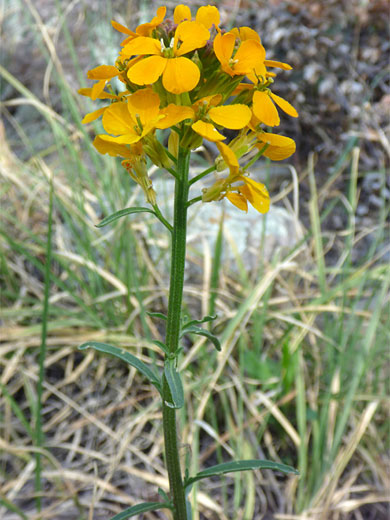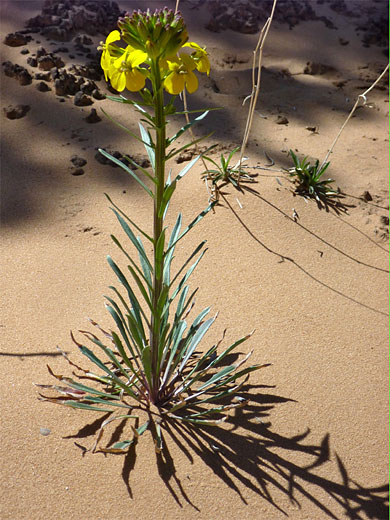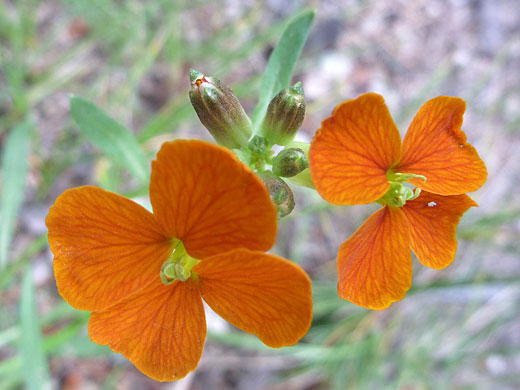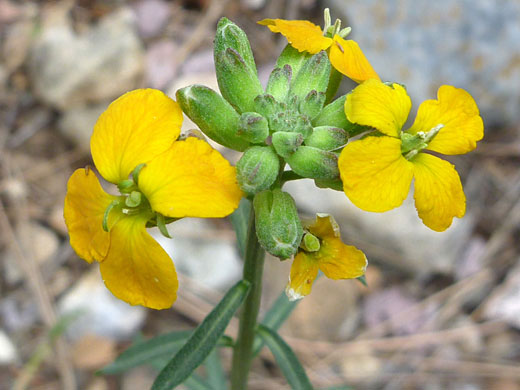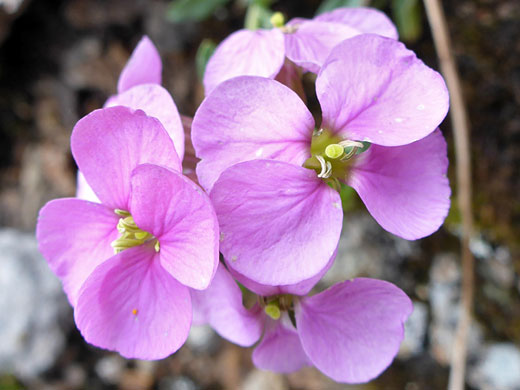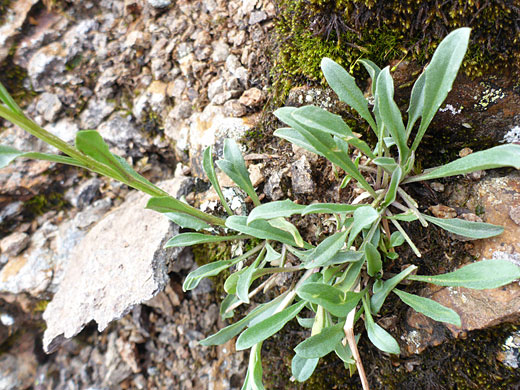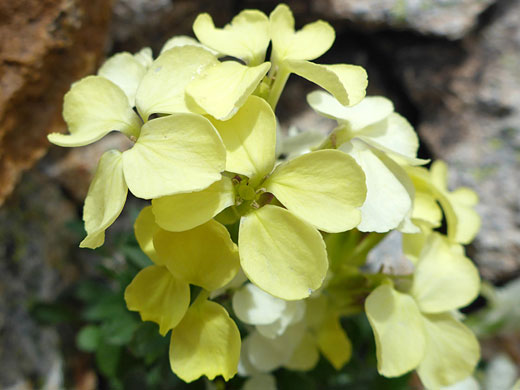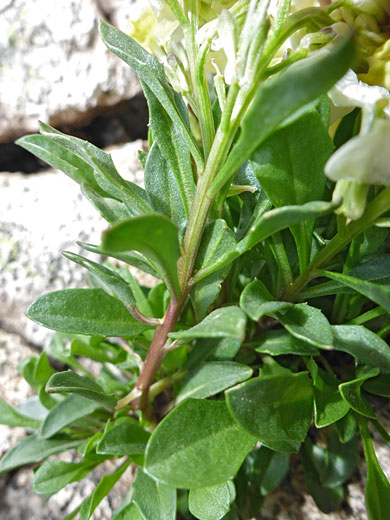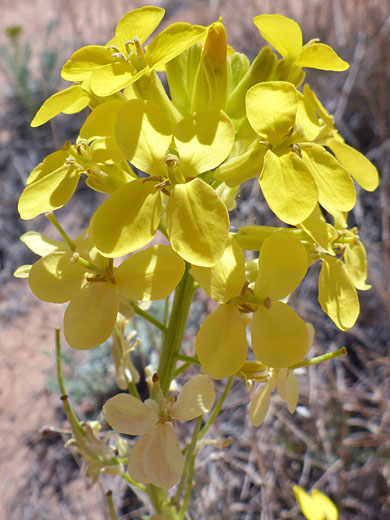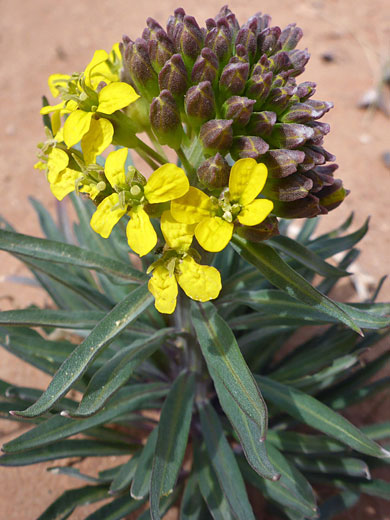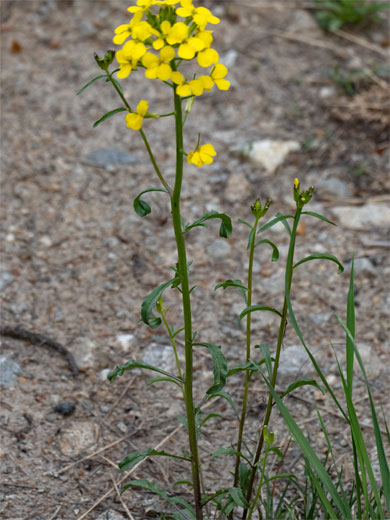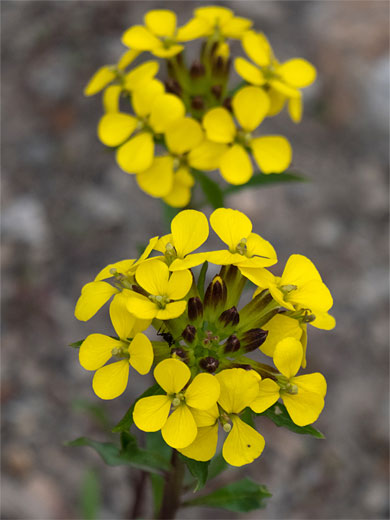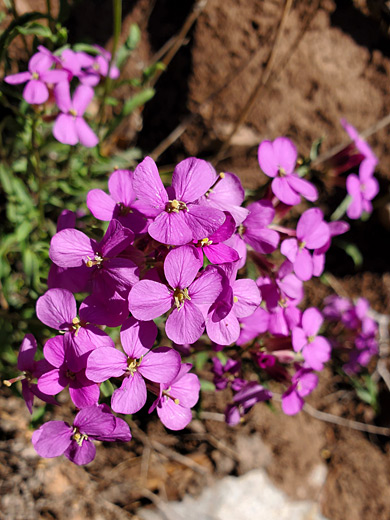Common names:
Sanddune wallflower, western wallflower, prairie rocket
Family:
Scientific name:
Erysimum capitatum
Main flower color:
Range:
All across the western states. Less common in Texas, Oklahoma and Kansas
Height:
Up to 3 feet
Habitat:
Open hillsides and flats; stony or sandy areas
Leaves:
Long (up to 5 inches) and narrow (lanceolate), in a rosette around the base and along most of the stem. The edges may have a few small, well-separated teeth
Season:
March to July
The sanddune wallflower, erysimum capitatum, produces a thick, rigid, grooved stalk, usually unbranched, with a closely-spaced cluster of flowers at the top, usually colored orange, gold or yellow; each has four oval-shaped or rounded, lightly veined petals, generally not overlapping. Occasionally plants may have pink, red or even white flowers. Flower heads are about 1 inch across. Buds are green, becoming brownish at the tip as they mature. Leaves are most numerous around the base but are found most of the way up the stem. Fruits are long (up to 4 inches) and very narrow, angled vertically upwards, brownish in color and not constricted between the seeds.
The plant inhabits a wide range of environments and elevations, and is quite changeable in some aspects, such as height and leaf shape as well as petal color. Two varieties are recognized, both widespread: the lower elevation (sea level to 5,500 feet) var capitatum has petals that are orange or (less often) yellow, and winged seeds, while the higher elevation (3,300 to 12,400 feet) var purshii has yellow petals (less often pink or purple), and seeds which are not winged.
The plant inhabits a wide range of environments and elevations, and is quite changeable in some aspects, such as height and leaf shape as well as petal color. Two varieties are recognized, both widespread: the lower elevation (sea level to 5,500 feet) var capitatum has petals that are orange or (less often) yellow, and winged seeds, while the higher elevation (3,300 to 12,400 feet) var purshii has yellow petals (less often pink or purple), and seeds which are not winged.
All Contents © Copyright The American Southwest | Comments and Questions | Contribute | Site Map


